iWALK Crutch Sizing
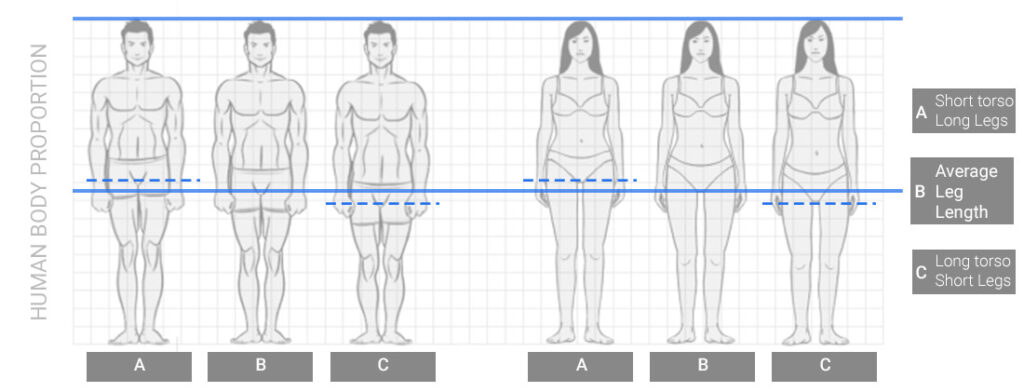
Will the iWALK crutch fit me? That’s a good question. If you’re built like 95% of the human population, the answer is YES! But wait..it’s not quite that easy.
What matters most is leg length. But since most people don’t know their leg length, we use height as a starting point, because everyone knows their height. And unless you are toward the shorter or taller end of the spectrum, height works fine. Which means, if you’re between 5’1” and 6’1” read no further, iWALK will fit you. For everyone else, check the chart below:
iWALK Crutch Size Chart: Based on Height
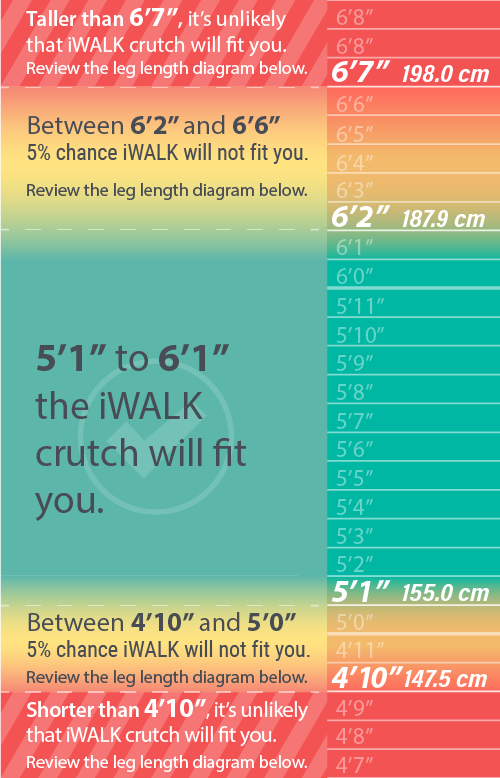

If your height is in the yellow or red zones, there’s a 5% chance that iWALK will not fit you. You need to consult the user’s leg length chart below to confirm your measurements are within the size range of iWALK.
iWALK Crutch Size Chart: Based on Leg Length
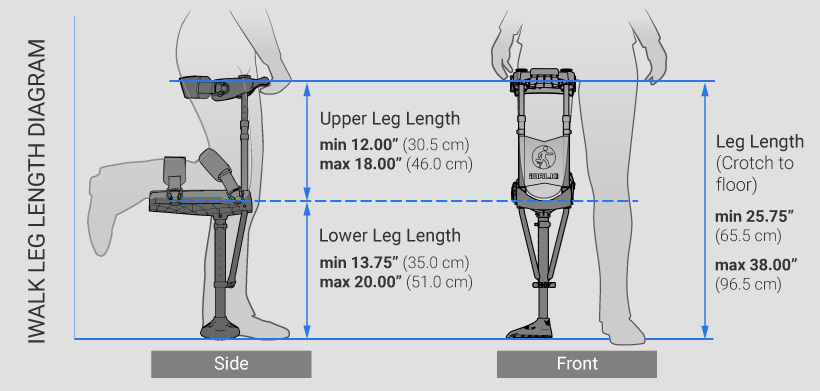
Measure both upper and lower leg as shown. If you fall within the ranges shown, iWALK crutch will fit you, no matter what your height is.
Not all legs are created equal. Two people with equal overall leg length may have different upper and lower leg proportions (see diagram below). The iWALK crutch accommodates this by having both upper and lower leg length adjustments, but there are limits. To be certain that your leg proportions are within the limits of the adjustment range of the iWALK crutch, check the chart seen above. If you are, the iWALK crutch will fit you. 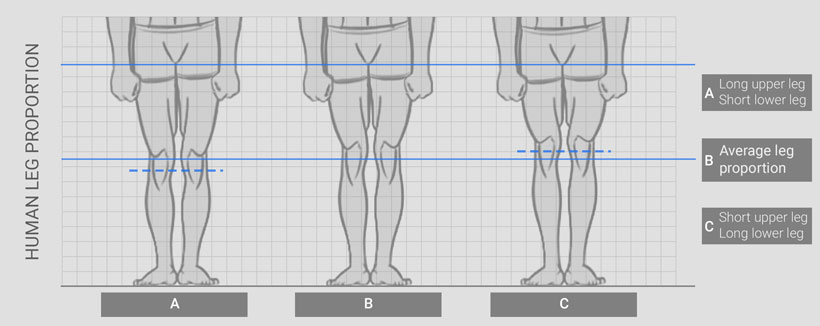
iWALK Crutch Capacity
1. Thigh Circumference Limit
The last sizing requirement is thigh circumference. Measure your thigh at the very top of the leg.
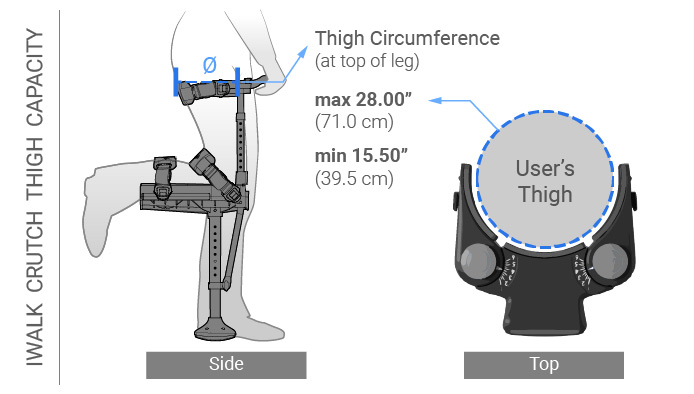
2. Weight Limit
If you weigh over 275 pounds (125 kg) or are significantly overweight, iWALK crutch is not a suitable option for you.
Potential Knee Comfort Issues
In rare instances the iWALK crutch can cause localized soreness in the tibial tuberocity, which is the area of the shin directly below the knee.
For most people, the transition from the knee to the shin (tibia) is fairly straight, but some people have a pronounced bump. In extreme cases, the size of this protrusion is more than the standard foam padding on the iWALK crutch can support, which can result in a localized painful “hot spot”.
Fortunately, there’s an easy solution – just augment the existing foam near the front of the crutch to accommodate the condition. You can purchase a replacement pad from us and simply install it on top of the existing pad, or you can also try some other readily available remedies, such as a folded hand towel, inexpensive gardening knee pads found at home improvement stores, etc. To gain a better understanding of the situation and the solution, see our diagrams below.
We could simply use a thicker pad to accommodate everyone, but we don’t – and here’s why. The connection between the leg and the crutch is crucial for feel and control. Basically, you want the iWALK crutch to be an integral part of your leg. Having no padding would be the ideal, but it would be too uncomfortable. So we intentionally use the minimum amount of padding to provide the best compromise between comfort and control.
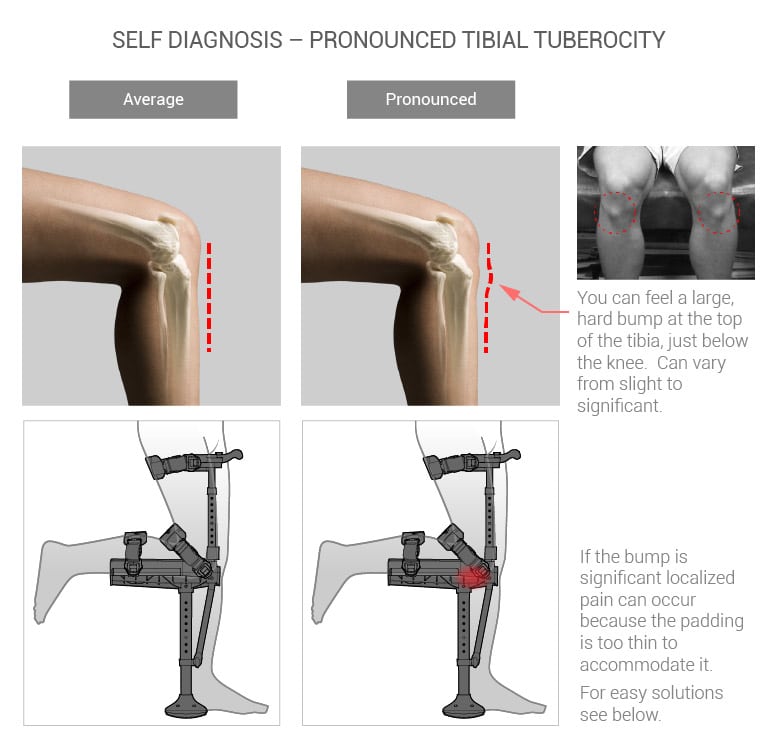
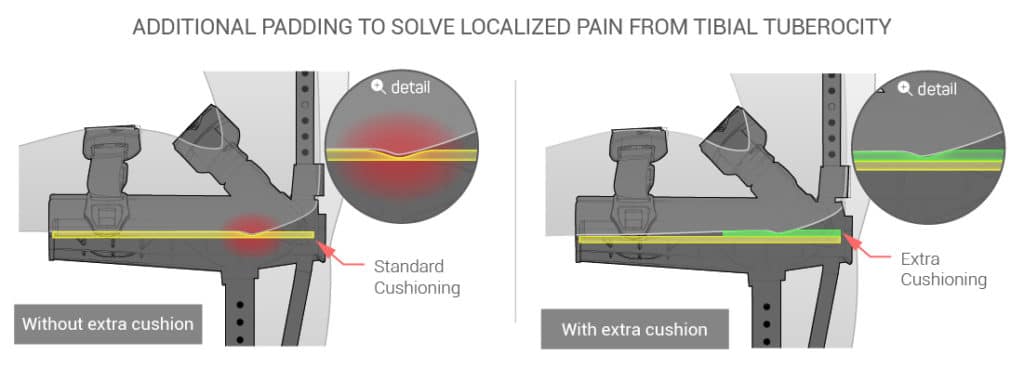
Still have questions or concerns?
We’re here to help. Check our Frequently Asked Questions or contact us.


